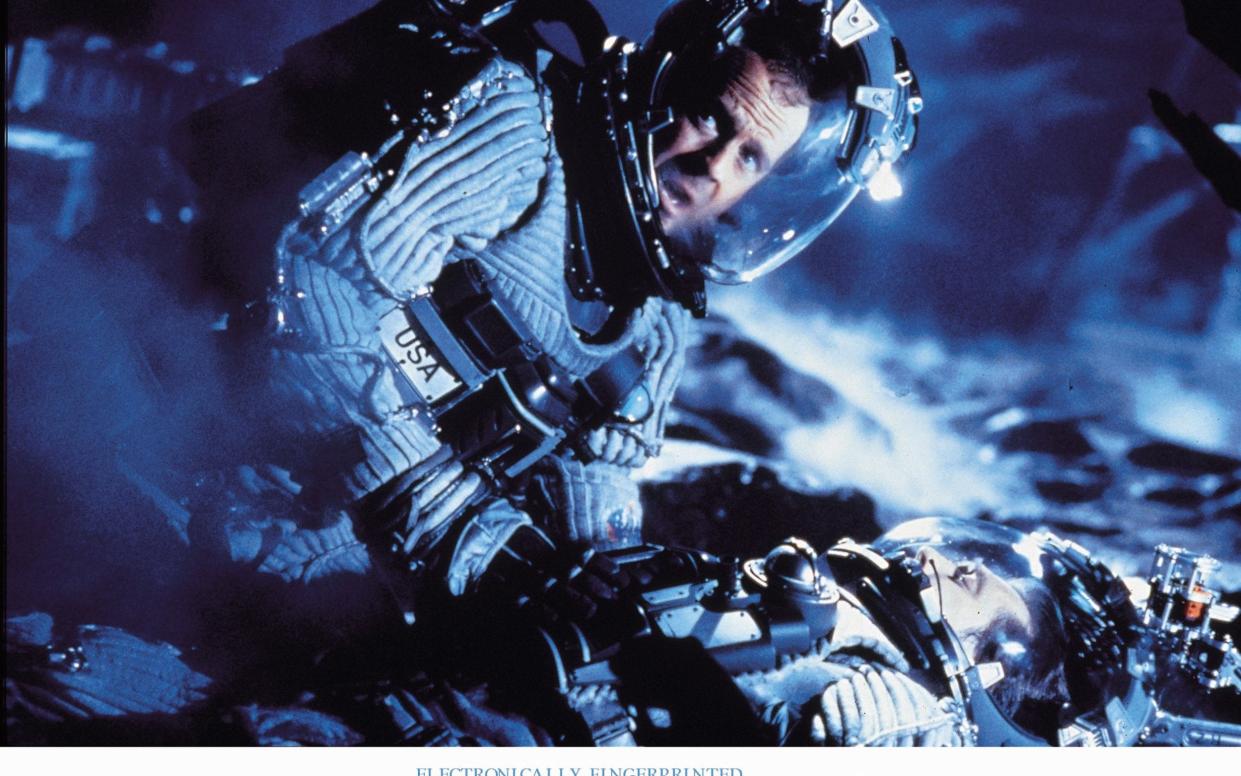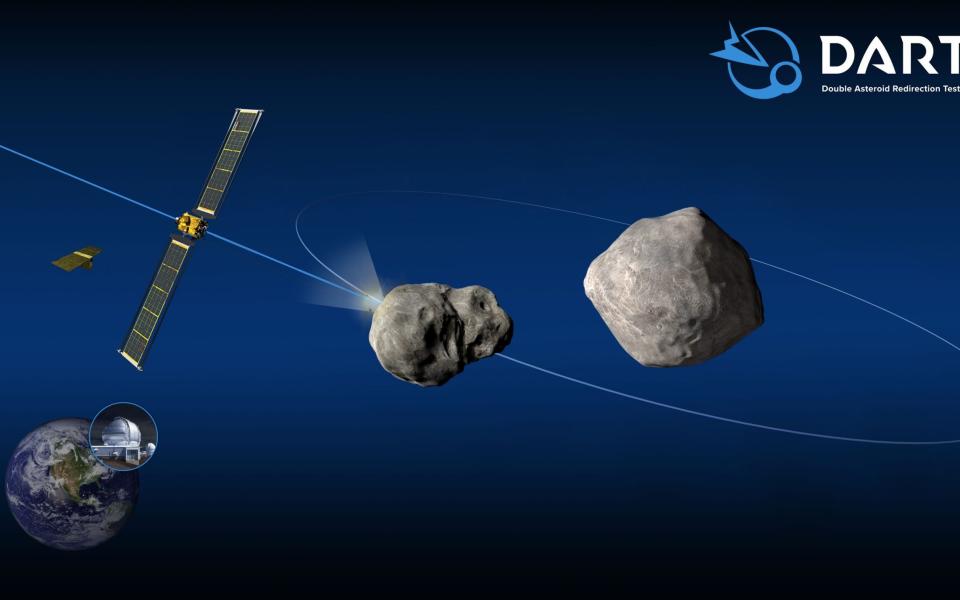Nasa to crash spacecraft into asteroid in 'Armageddon' test of planetary defences

Nasa is set to smash a spacecraft into an asteroid at 15,000mph in its first ever "planetary defence" test to see if it will be able to prevent potentially cataclysmic future collisions.
The mission will assess if it is possible to divert an incoming celestial body and avoid a mass extinction event like the one that wiped out the dinosaurs, and most life on Earth, 66 million years ago.
Scientists have already identified at least 26,000 "near-Earth objects" and there are estimated to be 4,700 which meet Nasa's classification as "Potentially Hazardous Objects," meaning they are larger than 500ft across, pass within 4.7 million miles of the planet, and would cause devastating damage if they hit.
The asteroid being targeted is not threatening Earth but, if successful, it will be the first time humans have altered the path of a non-Earth object in the solar system.Nasa's mission mirrors the plot of the Hollywood blockbuster "Armageddon" in which the space agency diverts an approaching asteroid.
In the film a crew, led by Bruce Willis and Ben Affleck, saves the world by landing on the giant rock and using a nuclear bomb to split it apart.

The real-life operation, known as the Double Asteroid Redirection Test [DART] does not include a crew. It will blast off on November 23 on a SpaceX Falcon 9 rocket from Vandenberg Space Force Base in California.
Nasa has selected Dimorphos, a small moon about the size of a football stadium, which orbits around a half-mile wide asteroid called Didymos.
In September the pair of objects will pass within seven million miles of Earth, meaning the effect of the impact can be observed by astronomers on the ground.
Dimorphos is derived from a Greek word meaning "having two forms" and Didymos means "twin".
The spacecraft is about the size of a golf buggy and powered by an array of solar panels.
When it gets close to the asteroid an autonomous navigation system will allow it to find Dimorphos and aim towards it, hitting it at a speed of 14,763mph.
The collision is only expected to change the speed of Dimorphos by less than one per cent, but that will alter the time it takes to orbit Didymos by several minutes.
An on-board camera called DRACO will film the impact.
Just before the crash the spacecraft will also release a satellite, provided by the Italian Space Agency, which will record the impact and send images back to Earth.
It is expected to see a bright flash and then a plume of dust.
The mission is being led by Nasa's Planetary Defence Coordination Office
Tom Statler, a programme scientist at Nasa, said: "This is our first full-scale attempt to demonstrate that we can change the motion of an asteroid in space, potentially as a way of defending Earth against the hazard of asteroid impacts.
"We're going to demonstrate one technology to cause that deflection that, someday, if we need to, we might use to prevent an asteroid from hitting the Earth."
He added: "We certainly hope that we will never have to deploy an asteroid deflector, but we want to do the test now."
Several years after the collision, once the dust has settled, the European Space Agency's Hera probe will arrive to make a proper assessment of the effect of the impact on Dimorphos.
Planetary scientist Kleomenis Tsiganis, part of the DART team, said: "This object is the first celestial body to have the form of its orbit significantly changed by humanity."
Last month, Nasa updated its forecast for one of the most dangerous known asteroids Bennu.
It's new calculation on the odds of Bennu, which is the size of a building, hitting Earth in the next 300 years were revised down to one in 1,750.


